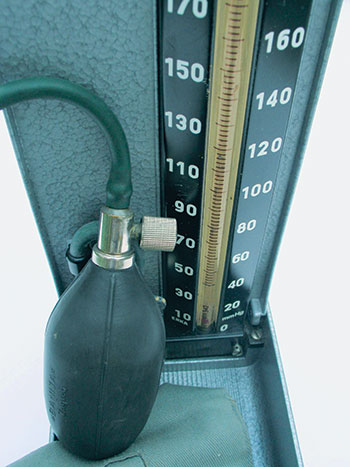MONEY MATTERS

When you have a medical checkup, your doctor usually checks your blood pressure, weight and pulse and possibly a host of other health indicators. With today’s economic challenges, it’s important to take your financial pulse regularly too — and you can do it yourself.
Landscapes asked two chief credit officers — Ted Murkerson of Southern AgCredit, ACA, in Flowood, Miss., and Mark Miller with Texas AgFinance in Robstown, Texas — to explain the key indicators they rely on when assessing a customer’s financial health.
Repayment Ability
Mark Miller uses the capital debt repayment capacity ratio to measure a customer’s ability to repay loans. He likes to see a 1.25-to-1 ratio, where for every dollar you owe in term loan payments, you should earn at least $1.25 in net income for the year. If you owe $100,000, you should make $125,000 or more. Net income is the amount of earnings remaining after you subtract expenses such as labor, fuel, feed, seed, fertilizer, family-living costs, taxes and rent.
Murkerson depends on a similar measure called balance remaining, which refers to the balance remaining to your annual income after you pay all tax, family-living and debt-servicing requirements. He prefers to see 25 percent or more remaining on your bottom line after you pay expenses. For example, if your gross income totals $160,000, and your expenses total $120,000, your balance remaining equals $40,000, or roughly 25 percent.
“In years when profitability was up, it was easier to meet repayment-ability standards,” Miller says. “During times like these, we rely more on liquidity.”
Liquidity
The liquidity ratio compares current assets or capital on hand to debt. Miller prefers a ratio of 1.25 to 1 or better. For every $1 of current liabilities, you should maintain $1.25 in liquid assets. If you owe $1 million in current liabilities, you should maintain $1.25 million in current assets. Current assets include cash, crop or livestock inventories, accounts receivable and marketable securities such as CDs, stocks and bonds. Current liabilities include obligations due in the next 12 months.
“In today’s economy, cash is king,” Murkerson says. “We believe 1.25 is an acceptable liquidity ratio, but I’m more comfortable with 1.50 amidst today’s economic environment. However, other factors may lessen our focus on liquidity.”
| Financial Indicator | What Lenders Want to See |
|---|---|
| Debt repayment capacity ratio | 1.25-to-1 ratio |
| Balance of income remaining | 25 percent or more |
| Liquidity ratio | 1.25-to-1 ratio or higher |
| Return on equity | 8 percent or higher |
| Debt-to-equity level | At least 55 percent of assets in the form of equity; liabilities no more than 45 percent |
Debt to Equity
Miller and Murkerson depend most on liquidity and repayment-ability yardsticks, but they also use a third ratio, which measures leverage by comparing debt-to-equity levels. At least 55 percent of your assets should be in the form of equity. If you have $1 million in real estate, for example, you should maintain $550,000 in equity or net worth, and owe no more than $450,000.
“It’s best to have liabilities of no more than 45 percent,” Murkerson explains. “This gives you more flexibility to borrow against your assets in the event you find yourself in a cash crunch.”
Miller explains it this way: “When you can no longer meet liquidity and repayment-ability standards, we rely on owner’s equity. Here’s why customers should hold more equity than debt: We want you to have more at stake in your operation than your lender has.”
Other Factors
The Farm Credit System maintains national standards for these formulas, along with return on equity (ROE). Miller prefers an ROE of 8 percent or better. At the end of the year, if you have $1 million in owner’s equity, you should net a profit of at least $80,000.
“Farming and ranching carries risk, and you should earn a high rate of return commensurate with the risk you take,” Miller says, adding that you might earn 8 percent but not have enough cash to service your debt. “That’s why we can’t depend on just one ratio. We look at the big picture.”
Realistic budget projections become especially important in times of financial stress. “Estimate your yield and prices you’ll receive and compare them with what it will take to produce the crop,” Miller suggests.
Lenders check your credit rating, too. Find yours by visiting www.AnnualCreditReport.com.
“These key indicators help us measure management skills and provide an indication of your character,” Murkerson says.
But Murkerson and Miller agree that it’s also important to communicate with your lender, especially since bad weather or low commodity prices can quickly impact success.
As with a medical checkup, a financial checkup can prevent problems down the road. “Sit down with your Farm Credit loan officer and make sure you’re looking at the same numbers,” Miller says. “Be proactive.”
– Nancy Jorgensen